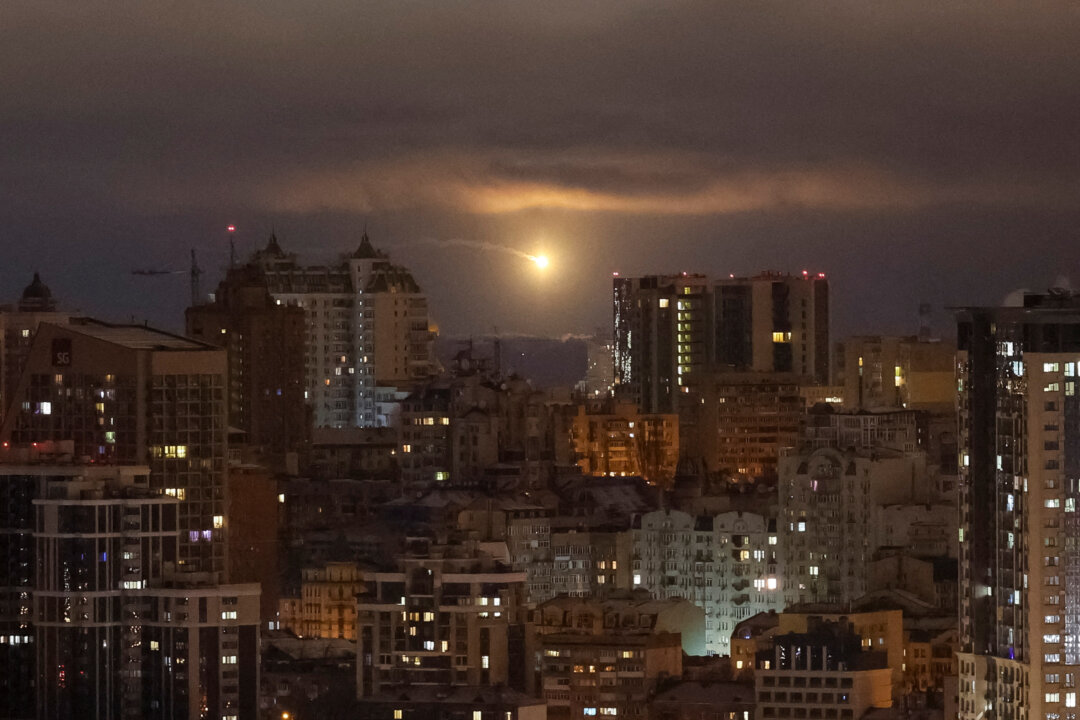Around 80 percent of Russia’s Western drone parts were smuggled via China, according to Estonian intelligence.
The Chinese regime is helping Russia in its war against Ukraine by allowing China’s private sector to smuggle Western drone parts to Russia, the Estonian Foreign Intelligence Service said on Feb. 12.
In a report, the agency said that Russia’s drone production remains dependent on Western parts, and that 80 percent of sanctioned Western drone components obtained by Russia’s military-industrial complex had gone through China.
Ukraine estimated last year that around 60 percent of the foreign parts found in Russian weapons in Ukraine were from China.
The Estonian report says the Chinese regime has “made some efforts to restrict its state-owned and state-associated entities from supplying sanctioned goods to Russia.”
However, the regime “facilitates bilateral cooperation and covert transfers of dual-use components through private companies,” the report states, potentially reducing Russia’s dependence on Western suppliers.
“Chinese interests here lie in preventing Russia from losing the war in Ukraine as such an outcome would represent a victory for the United States, which is the main rival for China also. And it also would put a setback for China’s efforts to reshape the rules-based international order in favor of authoritarian regimes,” Kaupo Rosin, director general of the service, told reporters in a video call.
“China portrays Ukraine as a pawn in a game of global powers which means belonging to Russia’s sphere of influence. China’s perspective would likely be the same if Estonia were in Ukraine’s position.”
Beijing has not yet responded to the report, but has previously denied aiding Russia’s drone production.
After the U.S. Treasury Department sanctioned two Chinese companies for their alleged involvement in developing and manufacturing Russia’s Garpiya series long-range attack drones, Beijing’s foreign ministry spokesperson, Mao Ning, said the regime imposes strict export control over drones.
The Treasury said it was the first time the United States had sanctioned Chinese entities responsible for the development and manufacture of full weapons systems in partnership with Russian firms.
Estonia, like its Baltic neighbors Latvia and Lithuania, was forcibly annexed by Moscow during World War II, regaining its independence only in 1991 as the Soviet Union fell apart.
The NATO member closely tracks Russian military capabilities as it regards Moscow as the major threat to its security, especially since Russia’s invasion of Ukraine in February 2022.
The Estonian Foreign Intelligence Service stated in its report that the Russian armed forces are growing “despite suffering enormous losses” during the war, and are “rapidly advancing technologies such as drones,” increasing the threat to Estonia as well as NATO.
According to the report, Russia is expanding its armed forces primarily by recruiting contract soldiers, aiming to more than double the size of its military from its pre-war numbers of between 600,000 and 700,000 soldiers to 1.5 million in 2026.
Moscow’s multi-billion-euro national drone development project, which aims to create a million jobs and integrate drone-related education into 75 percent of Russian schools, suggests that the Kremlin views the development and production of drones as a top priority, the report states.
The project “likely reflects both economic ambitions and an intent to emulate China’s model, where civilian initiatives for new technologies and production capacities also facilitate rapid and cost-efficient transfers to the military sector,” it states.
According to the U.S. Department of State, the Chinese regime’s military-civil fusion strategy eliminates “barriers between China’s civilian research and commercial sectors, and its military and defense industrial sectors.”
Besides tapping into China’s pool of talent, the department said the CCP is also acquiring foreign technologies via a range of legal and illicit means, including investment, research collaboration, espionage, and theft.
Since 2021, the Pentagon has designated 134 Chinese companies as military companies, including private companies that the department considers to be contributors of Beijing’s military-civil fusion strategy.
Reuters contributed to this report.

